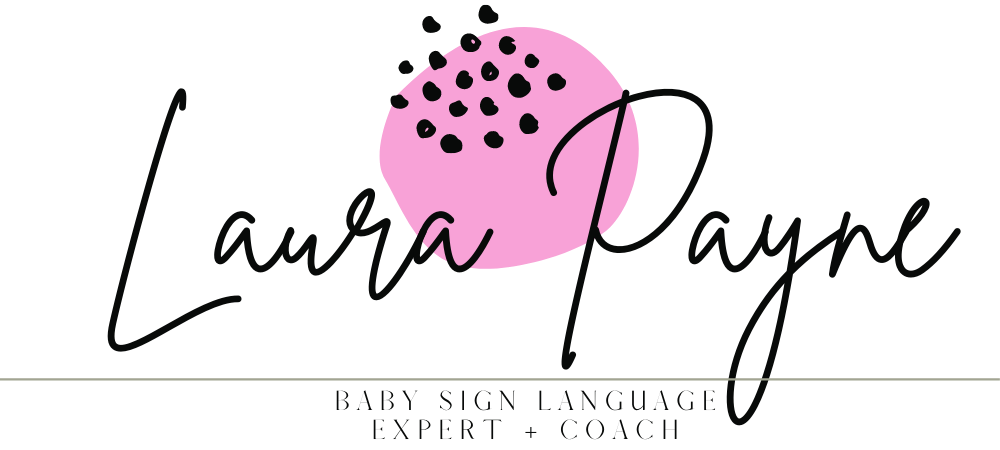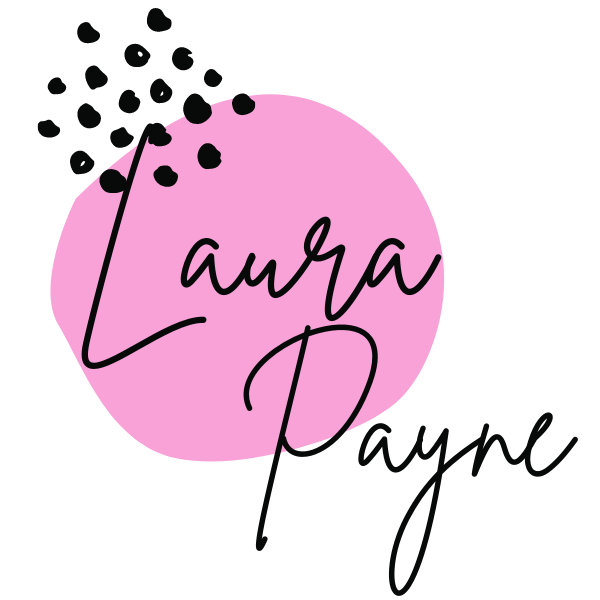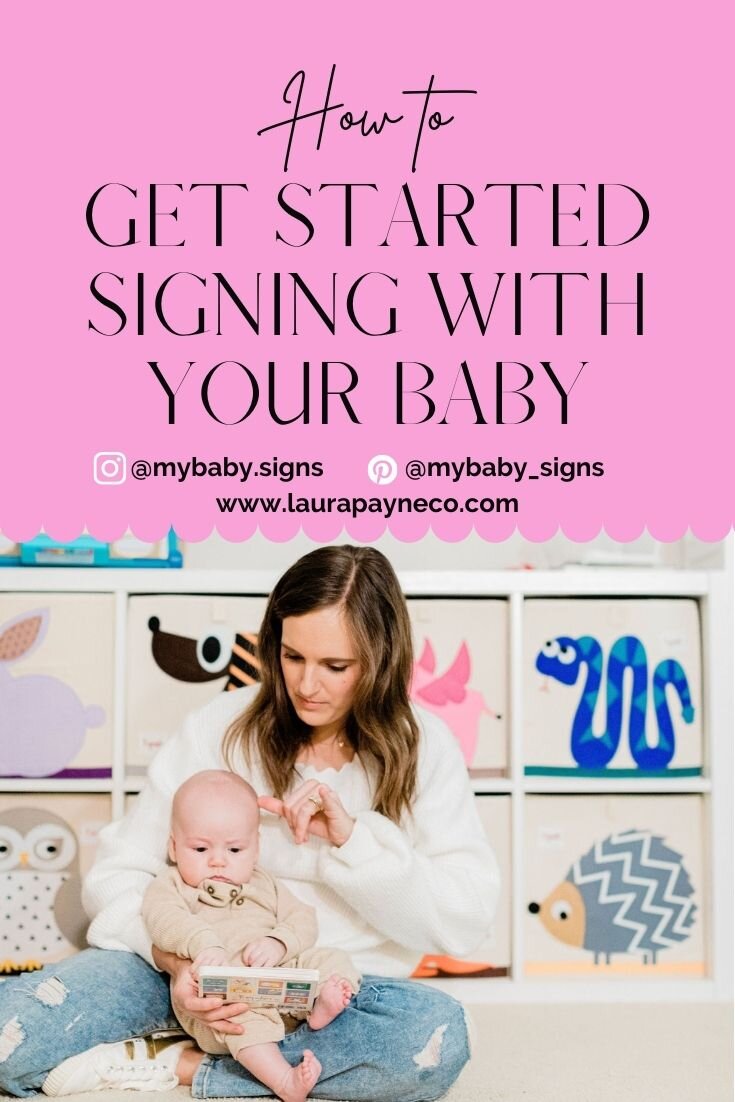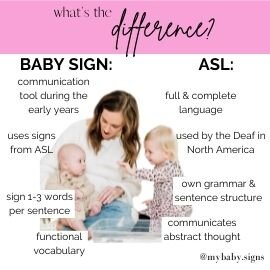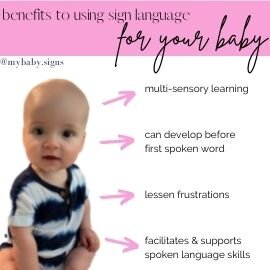How To Start Teaching Your Baby Sign Language
The world of parenting comes with new phrases and philosophies about everything from baby led weaning, sleep training, potty training, behavior and discipline, and using sign language for early communication. When it comes to baby sign language, what is it exactly and how do you start teaching your baby or toddler?
If you don’t already, please follow me on Instagram for more about how sign language can be a game charger for your baby / toddler’s early communication skills.
The popular term “baby sign language” is used to describe hearing parents using signs with their hearing infants or toddlers. The concept itself derives from the development of signs occurring a few months earlier than spoken language. This earlier access to functional language allows the very young child to be able to more easily communicate with his/her parents in a way that is better understood, rather than relying on grunts, cries, pointing, and gestures.
I want to break down the basics of baby sign language for you. Truly understanding what it is versus what it is not is very important, along with it’s benefits and some key guidelines about when and how to start signing with your child.
What is “baby sign language”?
First, I think the word “baby” is a bit misleading because toddlers and young preschoolers also greatly benefit from sign language for early communication (hence why “sign language” is best). But for the sake of this blog post, let’s just stick with “baby sign language.” I’ll dissect more about this topic in a later post.
Baby sign language uses signs from American Sign Language (ASL), which is the native language of the Deaf culture and communities in North America. While ASL is a full, natural, and extremely beautiful language with its own word order and grammar, parents usually only sign 1-3 words when signing with their baby or toddler.
ASL has “play on words” and slang, just like any other language. Baby sign language focuses on functional, high interest signs to help babies and toddlers communicate their immediate needs and wants to their parent or caregiver.
Baby sign language is not (and should not) be different signs from ASL. Simplifying, changing, or inventing signs is known as cultural appropriation. More to come on this topic!
Signing with your baby is also not a replacement for spoken language. While ASL users do not speak while signing, hearing parents of hearing babies should be speaking their native language (such as English) while signing with their baby.
What are the benefits of using sign language with your baby or toddler?
There are many benefits! I think the one parents first are drawn to is to lessen frustrations. Your baby was born communicating with you. Crying when they were hungry, rubbing their eyes and fussy when they were tired, and the list goes on. As they get older, that need for communication is still there, but the frustration builds because they can’t use speech yet.
Sign language can reduce that frustration because it is possible for babies to sign before they can speak, and for young toddlers to communicate words using sign language before they can be spoken.
This is because of the development of motor skills. Your baby’s motor skills develop faster than their verbal skills. If you watch their development, their feet and hands moved big time early on! It’s only later that they begin to coo and grunt. That is because larger muscles (such as the muscles in the arms and legs) develop more rapidly than smaller muscles (such as the muscles needed to make speech sounds).
Sign language uses motor skills to communicate, which is why it’s possible for your baby to sign ALL DONE before her first spoken word, and for your toddler to use the sign BOOK PLEASE while his speech skills are still developing.
This leads to an increased confidence in your child’s ability to communicate his needs and wants with you and other caregivers. This is because a sign is far more effective than cries, grunts, points, etc and you are able to respond more quickly without playing the guessing game as much.
That faster response by you will boost their confidence. They will then become more confident to communicate using sign language than what they were trying before.
There are other benefits, such as multisensory learning as well as brain development. I’m going to dive into them as a separate post, so stay tuned!
When should I start using sign language with my baby?
Honestly, it is never too early or too late to start. I personally started signing with my babies when they were newborns. Most parents I work with begin around the 6 month mark when solids are being introduced because the baby is more alert, responsive, and there is a lot of language opportunities during meal time.
That isn’t to say that I haven’t had parents choose to start signing with their young infants, and in the early toddler years as well! The most important thing is for you to start signing when you are ready. Using sign language for early communication does take consistency, intention, and dedication in order for it to be effective in reducing frustrations in your home.
How do I start using baby sign language?
First, it is important to evaluate the current communication needs of your child. This depends on their age, needs and wants, interests, current speech skills, and your family unit. Does your 5 month old need to communicate MILK? Would the sign HELP be beneficial for your 11 month old to communicate? What about a few specific toys or activities for your 15 month old? All of this plays into what signs to start with.
While you cannot overwhelm your baby or toddler with the number of signs you use, it can feel overwhelming as the parent, trying to learn and implement these signs with everything else on your plate. Take it a step at a time, starting with a few signs and adding to your vocabulary a few steps ahead of your child.
The more times you sign a word, the more your baby will be exposed to it. Repeat signs often, consistently during different routines and aspects of your day, and in as many contexts as you can.
Want to use sign language with your little one?
Get Started Now with 10 functional ASL signs to start using with your baby or toddler right away. Learn 3 tips to ensure you are using signs correctly and with realistic expectations. Whether you have already started signing, or just warming up to the idea, this free guide will take you one step closer to your goal!
Look Who’s Signing Now is my signature four part course that teaches you the exact blueprint I use to teach my own children sign language. Beginning with the foundation of why and when to use baby sign language, how to implement it, and what signs to use. With this self-study e-course, you will have the confidence to sign with your baby and boost their early communication while reducing frustrations, tantrums, and time wasted playing the guessing game.
Check out my online resources for parents! Browse my current offerings.
